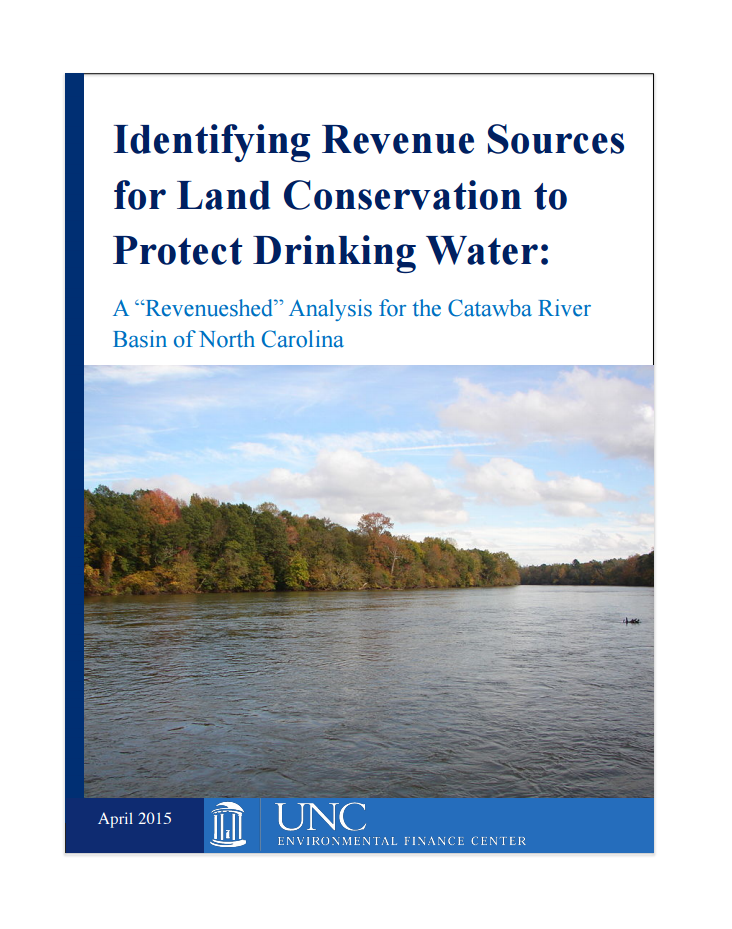Identifying Revenue Sources for Land Conservation to Protect Drinking Water: A "Revenueshed" Analysis for the Catawba River Basin of North Carolina
This report examines the potential for generating a cooperative, sustainable revenue stream among the local governments and public utilities in the North Carolina Catawba River Basin for the conservation of watershed lands and implementation of other watershed protection strategies. One of the primary challenges of watershed protection is that jurisdictional and watershed boundaries rarely align. This generates questions about who is responsible, and who should pay, for watershed protection. In this report, the EFC developed and applied the concept of a revenueshed, which is the area within which revenue is generated for watershed protection, in order to address these challenges.
Examples of policy implications highlighted in this report include:



